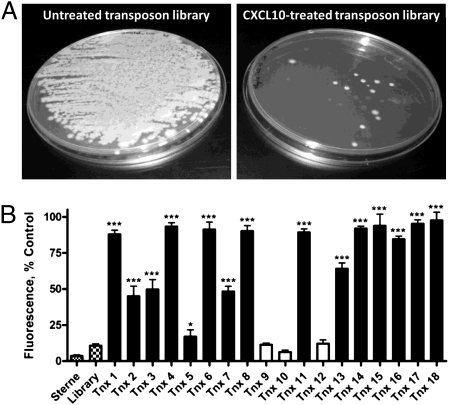Fig. 1.
Isolation of B. anthracis transposon mutants resistant to CXCL10-mediated bactericidal activity. (A) Primary screen: Vegetative bacilli were prepared from a pooled B. anthracis transposon mutant library and treated with vehicle alone (untreated) (Left) or 48 μg/mL human CXCL10 (Right). Viable transposon mutants that survived CXCL10 treatment are shown and represent the mutants isolated from one of two independent screens. (B) Secondary screen: Isolated transposon mutants were examined individually for CXCL10 resistance by using Alamar blue analysis. Vegetative bacilli were treated with 12 μg/mL CXCL10 and Alamar blue reduction was determined 6 h after treatment. Data are expressed as a percentage of the isolate-specific untreated control and represent mean values ± SEs of the means (SEM); n = 3 independent experiments. ***P < 0.001, *P < 0.05 compared with CXCL10-treated Sterne bacilli (checkered bar); open bars represent isolates that were not significantly resistant to CXCL10.

